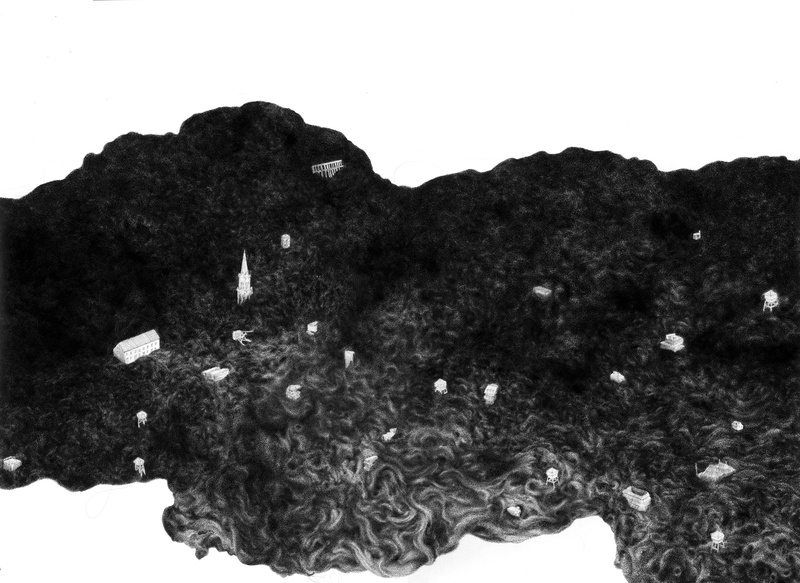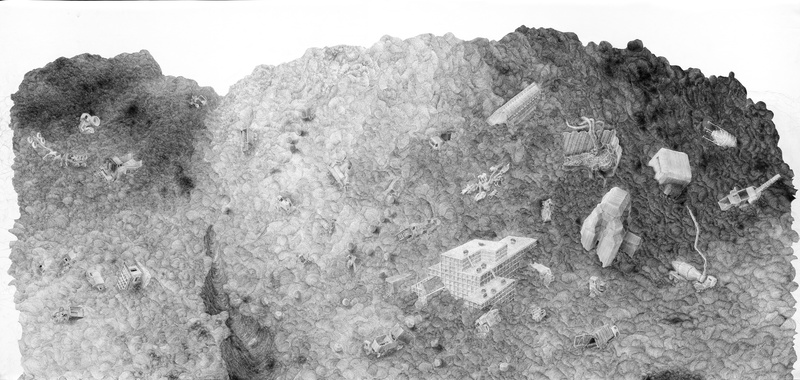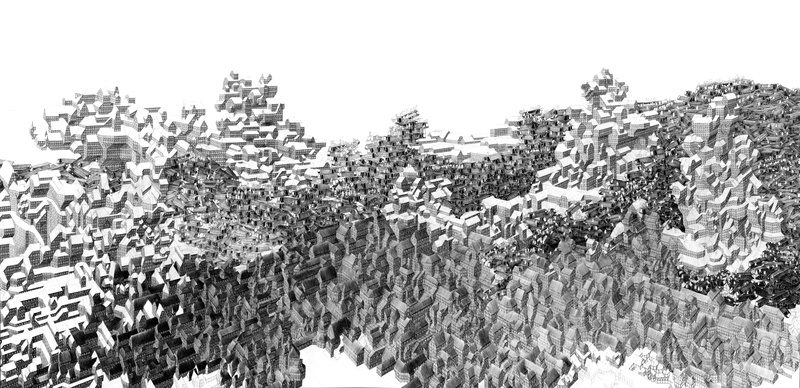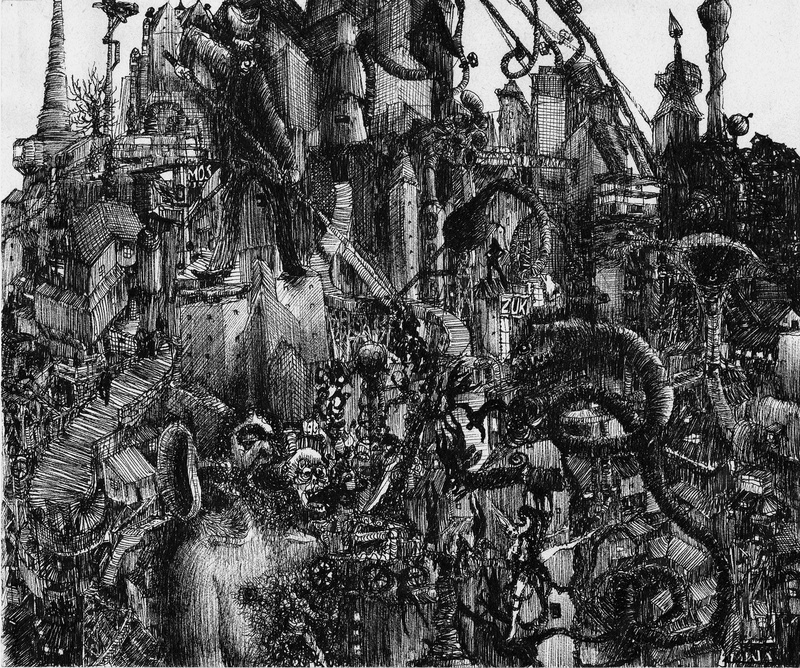Georg Bohle is fascinated by the exalting feeling that a city walk can give you as you are surrounded by buildings of large cultural and historic value. At the same time, every city has a different side to it: a dark atmosphere that is sinister and makes you feel like an outsider. This ambiguity was the starting point for Bohle’s investigative drawings exploring cities and urban conglomerations.
The artist uses contrasts and specific landmarks of real cities as input for his drawings of extremely detailed city landscapes. An example of one of these contrasts can be found in Istanbul; a city that is full of life and yet there is a continuous apocalyptic threat: the city is dangerously situated on a geological fault line and an earth quake can occur at any moment. Bohle knows of many other striking urban contrasts like this one. In Tashkent, Uzbekistan, for example, there is a very tall soviet style television tower, while further down the road handmade clay bricks are drying in the sun. Or take Jodhpur, a city in India with houses that are painted blue to frighten off the mosquitoes: this is the power that a tiny insect can have on an entire city. In 1995 Plymouth on Montserrat in the Caribbean was destroyed by volcanic eruptions. The city, that has been abandoned ever since, was covered by lava which resulted in an bizarre uninhabited landscape. Parts of the buildings stick out of the lava and form entrances to the covered remains of the buildings. Georg Bohle creates his imaginary cities in a similar way: naturally and intuitively. They are based on a wide variety of unique histories, excerpts and testimonies of reality.




